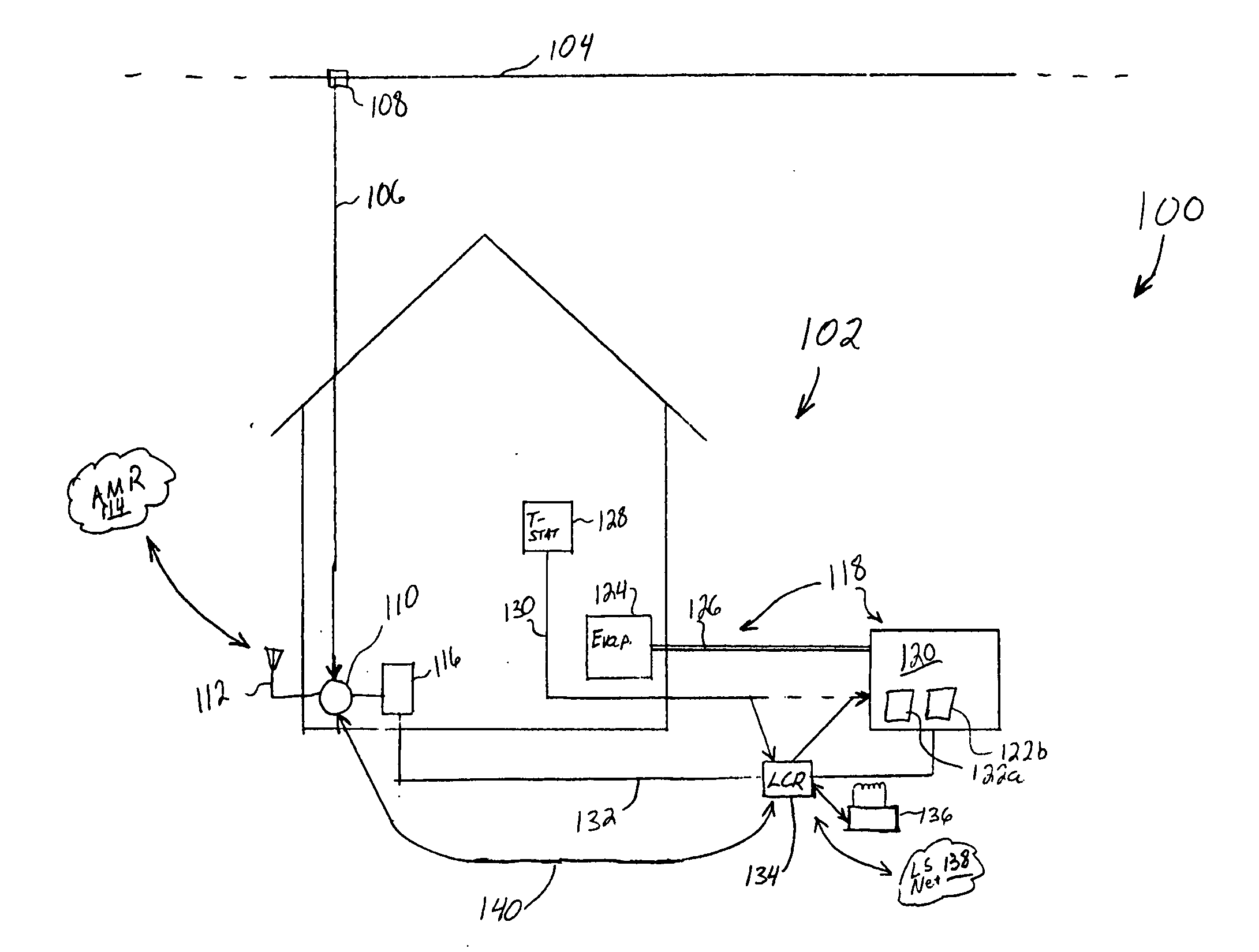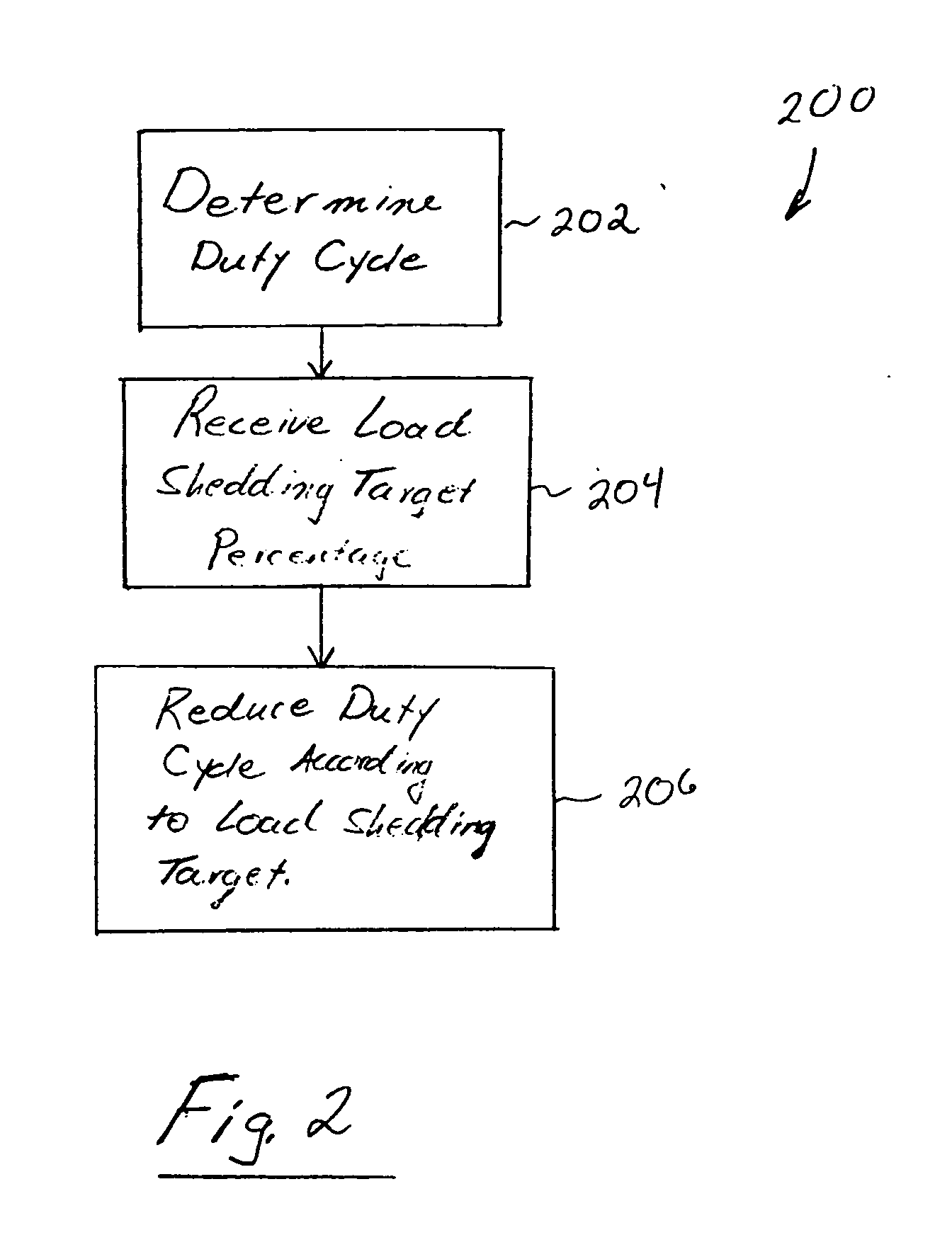Load shedding control for cycled or variable load appliances
a load shedding and variable load technology, applied in non-electric variable control, process and machine control, instruments, etc., can solve the problems of inapplicability of load shedding arrangements developed for these larger energy consumers, equipment that can justify more expensive and elaborate monitoring and control systems, and can not be widely applied. , to achieve the effect of reducing output and reducing cycle frequency
- Summary
- Abstract
- Description
- Claims
- Application Information
AI Technical Summary
Benefits of technology
Problems solved by technology
Method used
Image
Examples
Embodiment Construction
[0030] The needs described above are in large part met by the load shedding control system and method of the present invention. One aspect of the present invention is directed to reducing the energy consumption of an appliance such as an air conditioner based on its actual consumption pattern. In one embodiment, the operation of the appliance is adjusted such that the energy consumed by the appliance is reduced by an amount that is a percentage of the overall energy that would have been consumed in the absence of the load shedding. This embodiment can be applied to single stage, dual stage, multi-stage, and variable speed compressor units.
[0031]FIG. 1 is a diagram illustrating an exemplary portion 100 of a load shedding system that is installed at an residence 102 (which exemplifies a residential or small commercial space). An electrical utility provider (not shown) supplies AC power via overhead or underground distribution lines 104, and residential drop 106 via transformer 108. T...
PUM
 Login to View More
Login to View More Abstract
Description
Claims
Application Information
 Login to View More
Login to View More - R&D
- Intellectual Property
- Life Sciences
- Materials
- Tech Scout
- Unparalleled Data Quality
- Higher Quality Content
- 60% Fewer Hallucinations
Browse by: Latest US Patents, China's latest patents, Technical Efficacy Thesaurus, Application Domain, Technology Topic, Popular Technical Reports.
© 2025 PatSnap. All rights reserved.Legal|Privacy policy|Modern Slavery Act Transparency Statement|Sitemap|About US| Contact US: help@patsnap.com



